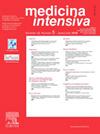Aplicaciones del ácido tranexámico en los pacientes neurocríticos: revisión narrativa
IF 3.1
4区 医学
Q2 CRITICAL CARE MEDICINE
引用次数: 0
Abstract
In patients with spontaneous or traumatic intracranial hemorrhage, hematoma expansion is associated with poorer neurological outcomes and increased mortality. The administration of an antifibrinolytic agent like tranexamic acid (TXA) may potentially improve clinical outcomes in patients with acute brain injury by preventing such intracranial expansion. However, studies on the impact of TXA in these patients have yielded variable results, and its efficacy, appropriate dosing and optimal timing of administration remain unclear. The present review summarizes the clinical evidence regarding the proper use of tranexamic acid in the treatment of intracranial traumatic and non-traumatic hemorrhage, and its implications for clinical practice.
tranexamic酸在神经批评患者中的应用:叙述综述
在自发性或外伤性颅内出血患者中,血肿扩张与较差的神经预后和较高的死亡率相关。抗纤溶药物如氨甲环酸(TXA)的使用可能通过防止这种颅内扩张来改善急性脑损伤患者的临床结果。然而,关于TXA对这些患者的影响的研究得出了不同的结果,其疗效、合适的剂量和最佳给药时间仍不清楚。本文综述了氨甲环酸在治疗颅内外伤性和非外伤性出血中的临床应用及其临床意义。
本文章由计算机程序翻译,如有差异,请以英文原文为准。
求助全文
约1分钟内获得全文
求助全文
来源期刊

Medicina Intensiva
CRITICAL CARE MEDICINE-
CiteScore
2.70
自引率
20.00%
发文量
146
审稿时长
33 days
期刊介绍:
Medicina Intensiva is the journal of the Spanish Society of Intensive Care Medicine and Coronary Units (SEMICYUC) and of Pan American and Iberian Federation of Societies of Intensive and Critical Care Medicine. Medicina Intensiva has become the reference publication in Spanish in its field. The journal mainly publishes Original Articles, Reviews, Clinical Notes, Consensus Documents, Images, and other information relevant to the specialty. All works go through a rigorous selection process. The journal accepts submissions of articles in English and in Spanish languages. The journal follows the publication requirements of the International Committee of Medical Journal Editors (ICMJE) and the Committee on Publication Ethics (COPE).
 求助内容:
求助内容: 应助结果提醒方式:
应助结果提醒方式:


